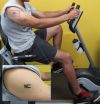(Press-News.org) Researchers at the Johns Hopkins Bloomberg School of Public Health say they have discovered a new clue to understanding how the most important medication for tuberculosis (TB) works to attack dormant TB bacteria in order to shorten treatment.
The antibiotic Pyrazinamide (PZA) has been used to treat TB since the 1950s, but its mechanisms are the least understood of all TB drugs. The PZA findings may help researchers identify new and more effective drugs not only for TB – which can require six months or more of treatment – but other persistent bacterial infections. A report on the research is published online Aug. 13 in the journal Emerging Microbes & Infections.
"PZA is probably the most unique antibiotic we have because instead of only going after TB cells that are actively replicating, it seeks out and destroys dormant TB cells that can't be controlled by other antibiotics," says study leader Ying Zhang, MD, PhD, a professor in the Bloomberg School's Department of Molecular Microbiology and Immunology. "It's like when you're weeding. Most current drugs just chop off the leaves, but the roots are still there. PZA gets at the roots. Learning how it does that may enable us to get rid of TB quicker and more permanently without relapse."
The new study, done in conjunction with Fudan University in Shanghai, found that PZA cuts off the energy production of Mycobacterium tuberculosis, killing the bacteria. It does this by disrupting the PanD, which, among other things, is crucial to synthesis of co-enzyme A, a molecule at the center of energy metabolism. When PanD is working correctly in a TB cell, it allows the cell to survive and persist despite a long course of treatment. Only PZA's unique ability to halt this process allows it to clear the dormant bacteria.
The researchers, who discovered another PZA target, Rspa, in recent years, say that PanD mutations are only found in a subset of TB bacteria resistant to PZA. The lab work done for the new study provides evidence that PanD is a new and distinct target for PZA, Zhang says.
PanD, Zhang says, is a promising finding because the enzyme is only present in bacteria like those found in TB and not in the cells of humans who contract the disease. It is always safer to attack a target that is only found in the dangerous organism and not in its host, he says.
In 2012, an estimated 8.6 million people worldwide developed TB and 1.3 million died from the disease. While the rate of new diagnoses is dropping, the number of drug-resistant cases is growing. When a patient is diagnosed with the lung disease, the course of treatment is six months of antibiotics. Researchers all over the world are trying to develop drugs that can work more quickly and without the toxic side effects common to all of the drugs in use.
PZA is the frontline treatment for TB. It is given to patients with both drug-susceptible and drug-resistant forms of the disease. All new drugs in development are used in conjunction with PZA.
Now that he understands the role that PZA plays on PanD and cells that persist long after treatment, Zhang says he plans to search for compounds that target PanD in the same way. The findings could have implications, he says, for developing drugs that target persistent organisms in other bacterial infections where dormant cells are known to re-emerge such as Lyme Disease, urinary tract infections and even cancer.
"Aspartate decarboxylase (PanD) as a new target of pyrazinamide in Mycobacterium tuberculosis" was written by Wanliang Shi, Jiazhen Chen, Jie Feng, Peng Cui, Shuo Zhang, Xinhua Weng, Wenhong Zhang, and Ying Zhang.
INFORMATION:
Funding for the research was provided by the National Institutes of Health's National Institute of Allergy and Infectious Diseases (AI099512 and AI108535), the Major Project of the Twelfth Five-Year Plan and the National Natural Science Foundation of China.
Researchers uncover clues about how the most important TB drug attacks its target
Findings could help researchers discover better medications for TB and other persistent bacterial infections
2014-08-13
ELSE PRESS RELEASES FROM THIS DATE:
Hurricane Julio and 2 tropical lows 'bookend' Hawaii
2014-08-13
Infrared satellite imagery from NOAA's GOES-West satellite shows three tropical system s in the Central Pacific Ocean that appears like bookends with Hawaii in-between.
In an infrared image from the GOES-West satellite taken August 13 at 1200 UTC (8 a.m. EDT/2 a.m. HST), Hurricane Julio lies to the north of Hawaii, while two low pressure areas lie to the southeast of the island state. The image was created by NASA/NOAA's GOES Project at NASA's Goddard Space Flight Center in Greenbelt, Maryland.
On August 13 at 0900 UTC (5 a.m. EDT/11 p.m. HST on Aug.12) the center of ...
How useful is economics -- how is economics useful?
2014-08-13
What insights do the models, experiments and econometric regressions of scientific research provide about the economy – and why and under what conditions are they useful in dealing with real-world problems? This question will be overarching the discussions among 17 Nobel Laureates in Economic Sciences and approximately 450 aspiring young economists from more than 80 countries in Lindau, Germany, next week. The 5th Lindau Meeting on Economic Sciences will bring them together for a unique dialogue across generations, cultures and scientific backgrounds. The meeting will open ...
Many older emergency department patients are malnourished
2014-08-13
More than half of emergency department patients age 65 and older who were seen at UNC Hospitals during an 8-week period were either malnourished or at risk for malnutrition.
In addition, more than half of the malnourished patients had not previously been diagnosed, according to a new study by researchers at the University of North Carolina at Chapel Hill. The study was published online August 13 by the journal Annals of Emergency Medicine.
"Malnutrition is known to be a common problem among older adults. What is surprising in our study is that most of the malnourished ...
Reduction of tau protein improves symptoms in model of severe childhood epilepsy
2014-08-13
Researchers at the Gladstone Institutes have shown that reducing brain levels of the protein tau effectively blocks the development of disease in a mouse model of Dravet syndrome, a severe intractable form of childhood epilepsy. This therapeutic strategy not only suppressed seizure activity and premature death, but also improved cognitive and behavioral abnormalities that can accompany this syndrome.
Previous studies from this group have shown that lowering tau levels reduces abnormal brain activity in models of Alzheimer's disease, but this is the first demonstration ...
'Shape-shifting' material could help reconstruct faces
2014-08-13
SAN FRANCISCO, Aug. 13, 2014 — Injuries, birth defects (such as cleft palates) or surgery to remove a tumor can create gaps in bone that are too large to heal naturally. And when they occur in the head, face or jaw, these bone defects can dramatically alter a person's appearance. Researchers will report today that they have developed a "self-fitting" material that expands with warm salt water to precisely fill bone defects, and also acts as a scaffold for new bone growth.
The team will describe their approach in one of nearly 12,000 presentations at the 248th National ...
Dust -- and the microbes hitching rides on it -- influences rain, climate
2014-08-13
SAN FRANCISCO, Aug. 13, 2014 — Dusty air blowing across the Pacific from Asia and Africa plays a critical role in precipitation patterns throughout the drought-stricken western U.S. Today, a scientist will present new research suggesting that the exact chemical make-up of that dust, including microbes found in it, is the key to how much rain and snow falls from clouds throughout the region. This information could help better predict rain events, as well as explain how air pollution from a variety of sources influences regional climate in general.
She will present a talk ...
Rooting out skin creams that contain toxic mercury
2014-08-13
SAN FRANCISCO, Aug. 13, 2014 — As countries try to rid themselves of toxic mercury pollution, some people are slathering and even injecting creams containing the metal onto or under their skin to lighten it, putting themselves and others at risk for serious health problems. To find those most at risk, scientists are reporting today that they can now identify these creams and intervene much faster than before. They're speaking at the 248th National Meeting & Exposition of the American Chemical Society (ACS).
The meeting, organized by the world's largest scientific society, ...
Tattoo biobatteries produce power from sweat (video)
2014-08-13
SAN FRANCISCO, Aug. 13, 2014 — In the future, working up a sweat by exercising may not only be good for your health, but it could also power your small electronic devices. Researchers will report today that they have designed a sensor in the form of a temporary tattoo that can both monitor a person's progress during exercise and produce power from their perspiration.
The team described the approach in one of nearly 12,000 presentations at the 248th National Meeting & Exposition of the American Chemical Society (ACS), the world's largest scientific society, taking place ...
A new look at what's in 'fracking' fluids raises red flags
2014-08-13
SAN FRANCISCO, Aug. 13, 2014 — As the oil and gas drilling technique called hydraulic fracturing (or "fracking") proliferates, a new study on the contents of the fluids involved in the process raises concerns about several ingredients. The scientists presenting the work today at the 248th National Meeting & Exposition of the American Chemical Society (ACS) say that out of nearly 200 commonly used compounds, there's very little known about the potential health risks of about one-third, and eight are toxic to mammals.
The meeting features nearly 12,000 presentations on ...
Passengers who survived terrifying Air Transat flight in 2001 help psychologists uncover new clues about post-traumatic stress vulnerability
2014-08-13
Toronto, Canada – An extraordinary opportunity to study memory and post-traumatic stress disorder (PTSD) in a group of Air Transat passengers who experienced 30 minutes of unimaginable terror over the Atlantic Ocean in 2001 has resulted in the discovery of a potential risk factor that may help predict who is most vulnerable to PTSD.
The study, led by researchers at Baycrest Health Sciences, is published online this week in the journal Clinical Psychological Science – ahead of print publication. It is the first to involve detailed interviews and psychological testing in ...
LAST 30 PRESS RELEASES:
Transforming acoustic waves with a chip
When climate risk hits home, people listen: Study reveals key to engagement with disaster preparedness messaging
Major breakthrough against diabetes thanks to a microbial molecule that disarms inflammation
Silicon chips on the brain: Researchers announce a new generation of brain-computer interface
Getting rest is the best
Towards sustainable organic synthesis – Mechanochemistry replaces lithium with sodium in organic reactions
Wireless device ‘speaks’ to the brain with light
Greenhouse gases to intensify extreme flooding in the Central Himalayas
New study sheds light on Milky Way's mysterious chemical history
Could altering the daily timing of immunotherapy improve survival in people with cancer?
Weaving secondary battery electrodes with fibers and tying them like ropes for both durability and performance
Using social media may impair children’s attention
Science briefing: An update on GLP-1 drugs for obesity
Lower doses of immunotherapy for skin cancer give better results
Why didn’t the senior citizen cross the road? Slower crossings may help people with reduced mobility
ASH 2025: Study suggests that a virtual program focusing on diet and exercise can help reduce side effects of lymphoma treatment
A sound defense: Noisy pupae puff away potential predators
Azacitidine–venetoclax combination outperforms standard care in acute myeloid leukemia patients eligible for intensive chemotherapy
Adding epcoritamab to standard second-line therapy improves follicular lymphoma outcomes
New findings support a chemo-free approach for treating Ph+ ALL
Non-covalent btki pirtobrutinib shows promise as frontline therapy for CLL/SLL
University of Cincinnati experts present research at annual hematology event
ASH 2025: Antibody therapy eradicates traces of multiple myeloma in preliminary trial
ASH 2025: AI uncovers how DNA architecture failures trigger blood cancer
ASH 2025: New study shows that patients can safely receive stem cell transplants from mismatched, unrelated donors
Protective regimen allows successful stem cell transplant even without close genetic match between donor and recipient
Continuous and fixed-duration treatments result in similar outcomes for CLL
Measurable residual disease shows strong potential as an early indicator of survival in patients with acute myeloid leukemia
Chemotherapy and radiation are comparable as pre-transplant conditioning for patients with b-acute lymphoblastic leukemia who have no measurable residual disease
Roughly one-third of families with children being treated for leukemia struggle to pay living expenses
[Press-News.org] Researchers uncover clues about how the most important TB drug attacks its targetFindings could help researchers discover better medications for TB and other persistent bacterial infections




